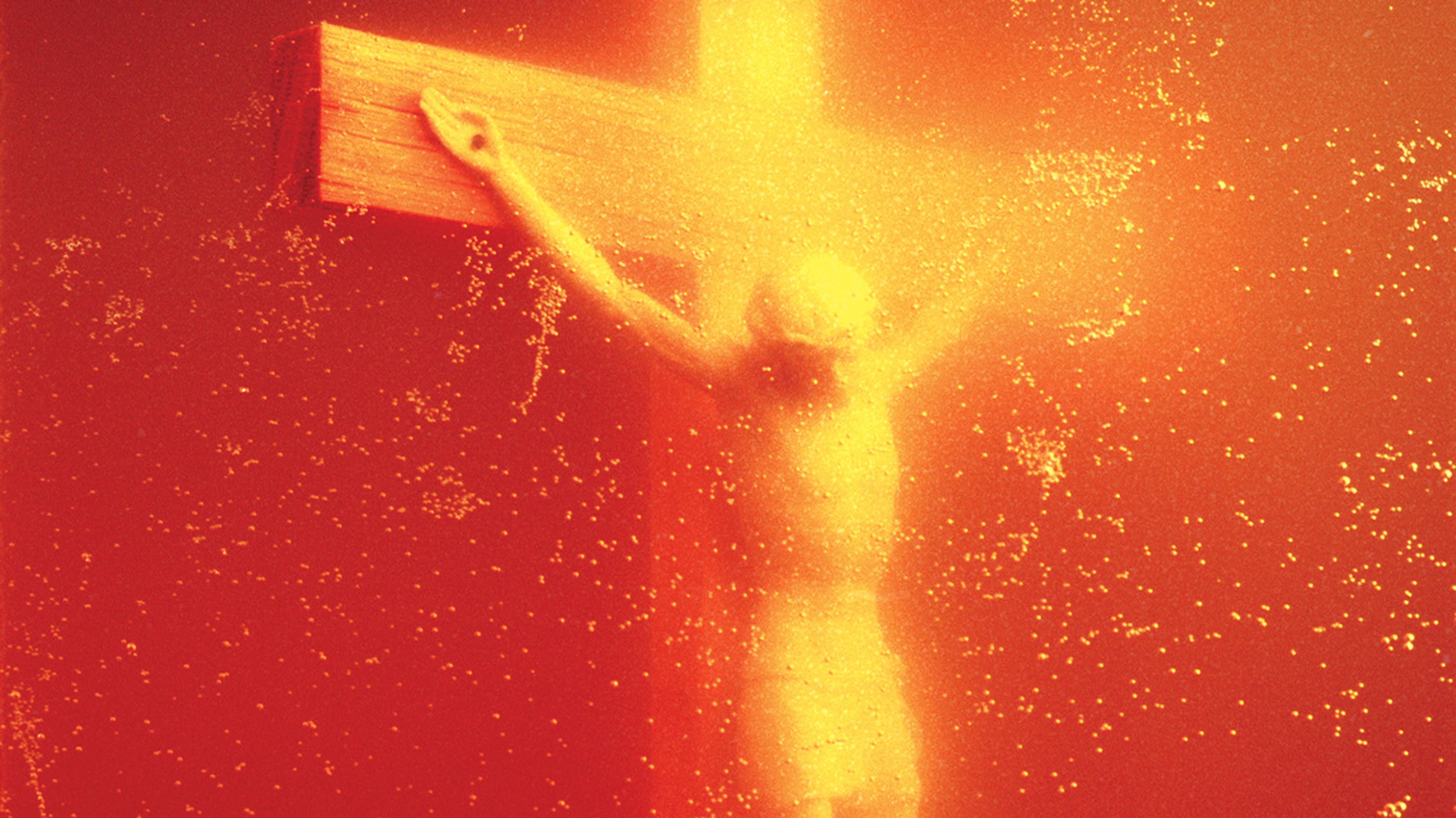Andres Serrano
Redemption

Andres Serrano’s works are beautiful in their perfection. And often provocative. Inspired by Renaissance painting and religious art, he challenges the viewer with taboo subjects such as sex and religion. Serrano portrays the homeless, the dead and the symbols of the Church. A crucifix submerged in yellow liquid caused wide-spread controversy. Entitling his work “Piss Christ”, Andres Serrano wrote himself into art history.
challenges his own and other people’s obsessions
Andres Serrano was born in 1950 in New York and grew up in the Italian-American neighbourhood Williamsburg with his Cuban-American mother but without his father. As a young man he often took refuge in the Metropolitan Museum of Art where he discovered Renaissance painting. After studying art, he worked as a commercial photographer for some years. In the mid-1980s he received his artistic breakthrough at a time when the photographic image was mostly synonymous with small, black-and-white prints, and when artists such as himself, Cindy Sherman and Christian Boltanski began to re-draw the map. Serrano photographed bodies in a graphically strict form as a homage to Classical forms, using body fluids such as blood, urine and semen.
Andres Serrano challenges his own and other people’s obsessions with topics bordering on the acceptable. He says that he wants to explore things he doesn’t know about and to encourage people to discuss things they don’t normally talk about. Confronting our fear of the unknown and the unexpected is how we learn.
In almost all of his works there are references to art history. Renaissance painting and masters such as Caravaggio and Goya are obviously part of his inspiration.The series “Immersions”, with which he made a name for himself, has caused controversy and scandal, not least the work “Piss Christ”, which has been destroyed in exhibitions and severely criticised by the Church. This is important to remember when freedom of speech is a highly topical subject.
During this time, Serrano also worked on the series “Bodily Fluids” where he employed various fluids in order to create works that referred to abstract painting, a kind of anti-photography. “I always felt that I was exploring or breaking new ground in photography by abstracting the image, very much like a painter does,” Serrano explains. “But it’s still a photograph. That’s why I always see myself as a conceptual artist with a camera rather than as a photographer.”
a contemporary artist who is not afraid of dealing with religious themes
In his series “A History of Sex”, he depicts people performing sexual acts or fantasies, it is sexuality between people on their own terms; they themselves decide what can and cannot be shown. Several of the models look straight at the viewer, proud of who they are, their love and sexual preferences, which may be perceived as provocative seeing that sex is usually regarded as a very private activity.
In 1990, Andres Serrano worked on two entirely different projects, which were still somehow related. He portrayed groups of people who, for different reasons, were marginalised. In the series “Nomads”, inspired by Edward S. Curtis’s portraits of Native Americans from the early 20th century, Serrano gave the homeless of New York a face.In the 1990 “Klan” series, Serrano portrayed members of the racist Ku Klux Klan organisation. He sees the two seriesas portraits of individuals and also as symbols of issues that sometimes clash with each other and with the rest of society. In Serrano’s work, everyone is of equal value, saints and homeless people, priests and racists.
The following year Serrano created “The Church”, a series which portrays the people who represent the Church and also the people who work in the churches, as well as empty churches and details such as chairs, ladders or a pair of church doors attached by a chain in the middle, solitary symbolic objects. He has said that he likes going to church for aesthetic rather than spiritual reasons.
In his 1992 series “The Morgue”, we are confronted with death in the form of images of dead people. Serrano claims that he is not depicting death but narrowing down life.
Andres Serrano is a contemporary artist who is not afraid of dealing with religious themes and using the iconography of religious art in his works. In his series “Holy Works”, he reinterprets medieval and Renaissance religious paintings. “As a Christian, I am entitled to use the symbols of the Church, because they are the symbols of my faith,” Serrano says. “This is not about attacking God or the Church, but actually about celebrating them both.” That is, the very opposite of blasphemy which his work is sometimes accused of. “Not only do I believe in God, I also believe in religious art, and in the beauty and power of that art.”
The exhibition is produced by Fotografiska. Thank you to Galerie Nathalie Obadia for the help in organizing the works on loan.